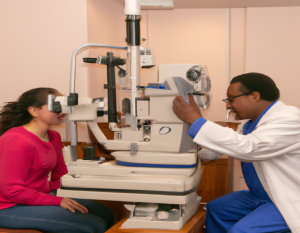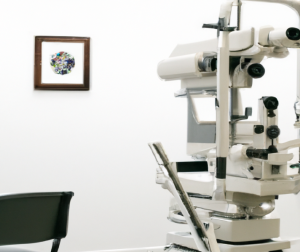When it comes to improving your vision, two surgical options often come to mind: PRK and LASIK. These advanced eye care treatments have transformed countless lives in the USA. But which one is right for you? In this article, we’ll delve into the key differences, benefits, and considerations of each procedure.
Understanding PRK vs LASIK at a Glance
Photorefractive Keratectomy (PRK) and Laser-Assisted In Situ Keratomileusis (LASIK) are both procedures designed to correct vision problems such as myopia, hyperopia, and astigmatism. By reshaping the cornea, the procedures enable light entering the eye to be properly focused onto the retina, resulting in clearer vision.
Procedure Overview
PRK

PRK was the first laser vision correction method to treat refractive errors. The procedure involves the removal of the outermost layer of the cornea, called the epithelium, before reshaping the underlying corneal tissue with a laser. The epithelium then grows back over the next few days post-surgery.
LASIK
In LASIK, a thin flap is created on the cornea using a microkeratome or femtosecond laser. This flap is then lifted, and the underlying corneal tissue is reshaped. Once complete, the flap is repositioned without the need for sutures.
Key Differences Between PRK and LASIK
- Recovery Time: PRK has a slightly longer recovery time compared to LASIK. This is because the epithelium needs to regenerate after being removed during PRK.
- Discomfort: Some patients report more discomfort after PRK, while LASIK patients usually experience less post-operative discomfort.
- Candidate Suitability: PRK might be preferable for individuals with a thinner cornea, as no flap is created. LASIK, on the other hand, is more common but might not be suitable for everyone.
Benefits of PRK
Given the nature of PRK, the procedure eliminates the potential complications related to the LASIK flap. It’s especially ideal for individuals involved in contact sports or professions where eye injuries might occur. Furthermore, PRK has been around longer, establishing a solid track record of safety and effectiveness.
Benefits of LASIK
LASIK is the most popular vision correction surgery, largely due to its quick recovery time. Most patients experience improved vision within 24 hours. Moreover, LASIK often has a lower risk of post-operative haze compared to PRK and generally requires less post-surgery medication.
Deciding on the Best Procedure for Optimal Eye Health
Both PRK and LASIK have their advantages and potential drawbacks. The best way to decide is to have a comprehensive eye exam and consultation with an eye specialist. Factors like your corneal thickness, lifestyle, and specific vision problems will play a crucial role in determining the most suitable procedure for you.

When it comes to advanced eye care treatments in the USA, both PRK and LASIK stand out as top-rated options for individuals seeking clearer vision. While the choice between them can seem overwhelming, the end goal is the same: achieving optimal eye health and vision correction tailored to your unique needs.
For a more in-depth look into Photorefractive Keratectomy, visit the U.S. National Library of Medicine’s MedlinePlus.















